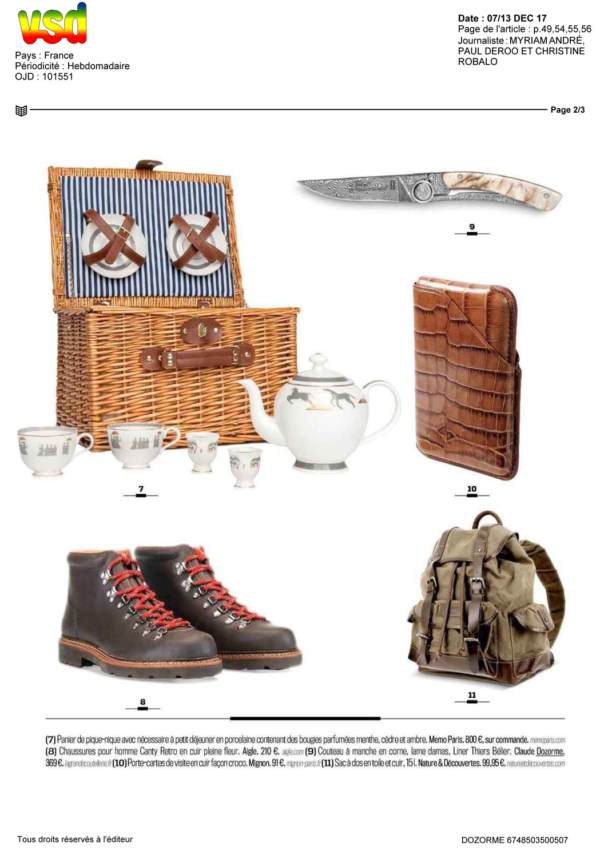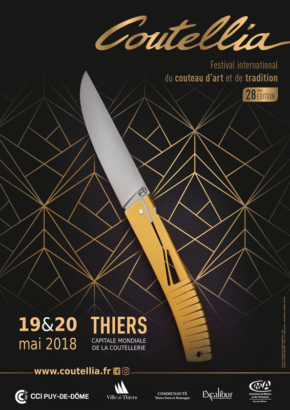 Photo credit : Ludovic Combe
Photo credit : Ludovic Combe
You will have noticed, number of exceptional Claude Dozorme’s knives, Le Thiers®, Laguiole or others is adorned with blades revealing patterns with rounded shapes, waves or curves. These blades are actually designed within the Dozorme cutlery from Damascus steel, which consists of a large number of layers forged together.
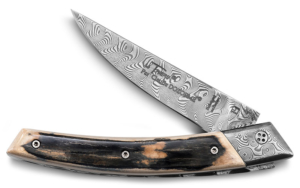 Damascus steel is obtained by folding and forging successively different pieces of steel. This process repeated several times makes it possible to obtain a single piece composed of a hundred successive layers. Once forged, this set, sort of puff of steel, will reveal all kinds of patterns.
Damascus steel is obtained by folding and forging successively different pieces of steel. This process repeated several times makes it possible to obtain a single piece composed of a hundred successive layers. Once forged, this set, sort of puff of steel, will reveal all kinds of patterns.
Traditionally, the purpose of Damascus steel also known as Damast, Damask steel or folded steel was to improve the properties of a piece of steel. Today, it is the most complex forge technical to perform.
 This is why, for its Damascus steel, the family factory installed in Thiers collaborates with Balbach a famous German specialist for 2 years now. It must be said that for Claudine Dozorme “Damascus Balbach is very high quality and forged in the rules of art! “.
This is why, for its Damascus steel, the family factory installed in Thiers collaborates with Balbach a famous German specialist for 2 years now. It must be said that for Claudine Dozorme “Damascus Balbach is very high quality and forged in the rules of art! “.
Damascus Balbach steel will then be worked and integrated into the most beautiful pieces, whether pocket knives or kitchen knives, manufactured in Dozorme workshops.
Focus on Balbach Damast
The Markus Balbach Forge stands out for its extensive experience and skills in forging techniques. Established in 1963 as an artesan forge by Eduard Balbach, the forge still exists today in the German city of Iserlohn. It is run by master blacksmith Markus Balbach as a second-generation family business. In 1991 Markus Balbach set up a second forge, which is located in Laubuseschbach in the central German region of Hesse. There he started doing research and development on Damascus steels and finally managed to produce them on an industrial scale. The forging specialists around Markus have continually developed and perfected this forging technique, which is well over 2,000 years old.
Now a market leader, this family business provides large industrial companies as well as small artisanal cutlery stores. For the latter, Damascus steels are forged by hand, using a complex and unique process. Custom creations are also proposed according to the requests of the customers.
Balbach Damast®
Heinrich Wörner Straße 1-3
35789 Laubuseschbach
+49 (0) 6475 8911
info@balbachdamast.com
www.balbachdamast.com
You can also “shop” our Le Thiers® pocket knives with Damas blade and Le Thiers® RLT ball bearing with Damascus blade on our online sales site, La Grande Coutellerie !








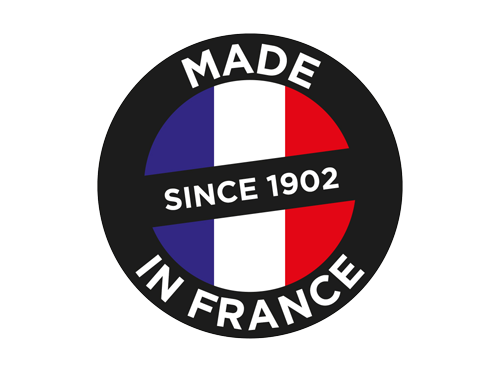




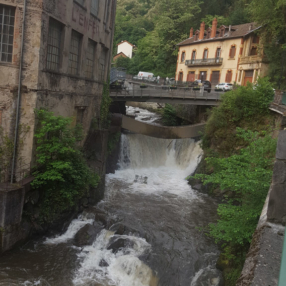
 « At Creux de l’Enfer, one of the spinning wheels where Blaise Dozorme learned the job of grinder » a Dozorme’s picture.
« At Creux de l’Enfer, one of the spinning wheels where Blaise Dozorme learned the job of grinder » a Dozorme’s picture. Today, “grind” is always done with great care but is performed in a vertical position, a much more comfortable posture or numerically with high precision equipment.
Today, “grind” is always done with great care but is performed in a vertical position, a much more comfortable posture or numerically with high precision equipment.
